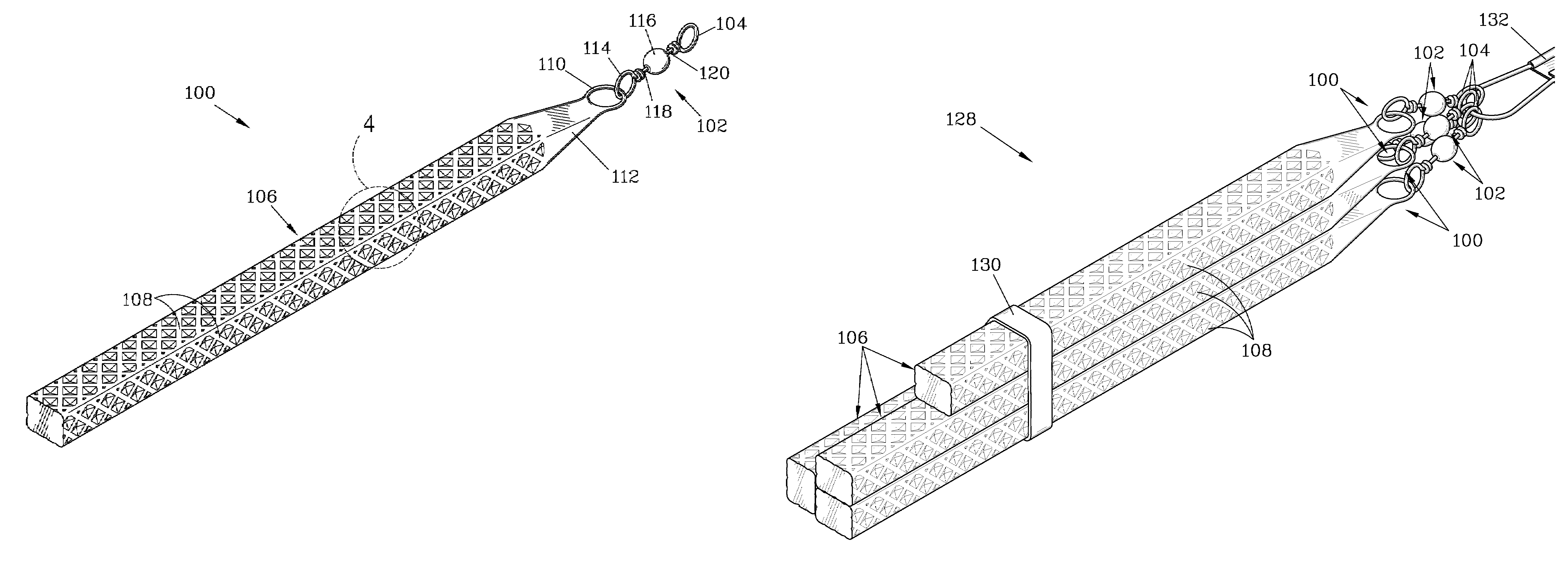Stackable casting sinker
a sinker and elongated bar technology, applied in the field of sinkers, can solve the problems of reducing the likelihood of the lashing slipping off the elongated bars, and achieve the effects of reducing the likelihood of snagging
- Summary
- Abstract
- Description
- Claims
- Application Information
AI Technical Summary
Benefits of technology
Problems solved by technology
Method used
Image
Examples
Embodiment Construction
[0020]FIG. 1 is an isometric view of a stackable weight 10 which can be bundled with similar stackable weights 10 to form a modular sinker 12 of the desired weight, as shown in FIG. 2. The stackable weight 10 has an elongated bar 14 with a fixed eye 16 attached thereto, and a link member 18. The link member 18 has a coupling eye 20, and is movably attached to the fixed eye 16.
[0021]The elongated bar 14 terminates in a leading end 22, to which the fixed eye 16 attaches, and a trailing end 24. Preferably, the fixed eye 16 is embedded in or forms an integral part of the leading end 22. The elongated bar 14 has a rectangular cross section 26 formed by four substantially planar side surfaces 28. The trailing end 24 is a substantially flat planar surface that is normal to the four substantially planar side surfaces 28. The elongated bar 14 should be formed from a dense, durable material, and typically will be made of metal. Examples of preferred metals are lead, tin, and alloys thereof.
[0...
PUM
 Login to View More
Login to View More Abstract
Description
Claims
Application Information
 Login to View More
Login to View More - R&D
- Intellectual Property
- Life Sciences
- Materials
- Tech Scout
- Unparalleled Data Quality
- Higher Quality Content
- 60% Fewer Hallucinations
Browse by: Latest US Patents, China's latest patents, Technical Efficacy Thesaurus, Application Domain, Technology Topic, Popular Technical Reports.
© 2025 PatSnap. All rights reserved.Legal|Privacy policy|Modern Slavery Act Transparency Statement|Sitemap|About US| Contact US: help@patsnap.com



